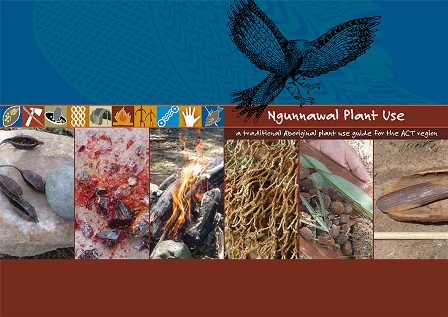 Ngunnawal Plant Use
Ngunnawal Plant Use
Ethnobiology
ACT Government, Canberra
2014
98
9781921117152
colour photographs for all plants
a Ngunnawal plant name index, a botanical name index and a common name index

Buy from: ACT Government
Ngunnawal Plant Use is a traditional aboriginal plant use guide for the Australian Capital Territory (ACT) region. It describes and illustrates 69 plant species, including their Ngunnawal use, distribution, and method of propagation.
The book was published and funded by the ACT Government. It was produced in partnership with the United Ngunnawal Elders Council and the Ngunnawal community, Murrumbung Yurung Murra staff (a network of ACT Government Aboriginal staff working in Natural Resource Management, Heritage and Parks), the Yurung Dhaura Aboriginal Land Management Team (who worked in the Cotter Catchment in 2011–2013) and Greening Australia. Ngunnawal Plant Use captures and records traditional Ngunnawal plant knowledge and use in a contemporary context.
Ngunnawal Plant Use is a full-colour, A5-spiral bound book of 96 pages suitable for outdoor use. The book includes an introduction to Ngunnawal history and natural resource use.
Buy from: ACT Government

